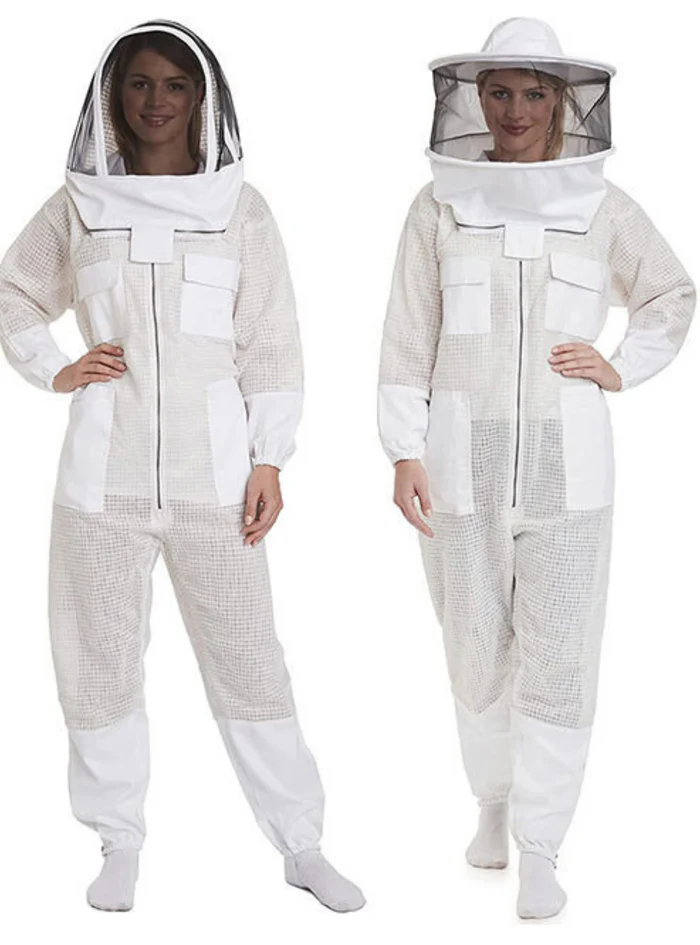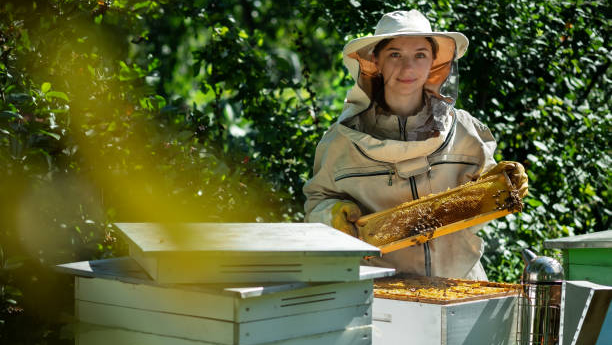Beekeeping is a fulfilling yet demanding activity that requires careful planning and the right tools. One of the most crucial items you’ll need as a beekeeper is a high-quality beekeeping suit. It serves as your primary protection against stings while allowing you to work comfortably and efficiently. With so many options available, it’s important to understand what makes up an essential beekeeping suit and how to choose the right one for your needs. In this article, we’ll explore the key aspects to consider before buying a beekeeping suit.
Importance of a Beekeeping Suit
Beekeeping suits are essential for your safety. Bees are typically non-aggressive, but they can become defensive if they feel their hive is threatened. A sting can cause discomfort and, in some cases, allergic reactions. The suit acts as a barrier between you and the bees, preventing stings and minimizing the risks involved in handling the hive.
Moreover, comfort is crucial in beekeeping, as many tasks require you to spend long hours working in and around the hive. A proper suit not only keeps you safe but also ensures you stay comfortable throughout your activities.
Material: What to Choose?
When selecting a beekeeping suit, one of the most important features to consider is the material. The fabric plays a major role in both comfort and protection.
- Cotton: Cotton is a breathable material that allows for air circulation, making it ideal for warmer climates. However, while cotton is comfortable, it may not offer the best protection against stings compared to other materials.
- Polyester: Polyester is more durable and abrasion-resistant than cotton. It provides better protection but is less breathable, making it a good choice for cooler climates.
- Cotton-Polyester Blend: A blend of cotton and polyester combines the benefits of both materials. It offers comfort and breathability while being durable enough to provide effective protection.
The choice between these fabrics largely depends on the climate where you’ll be beekeeping and your comfort preferences.
Ventilation for Comfort
Working with bees can be physically demanding, and the last thing you want is to overheat. Beekeeping suits often come with ventilation features to help regulate body temperature. Mesh panels and breathable zippers are common in many suits to allow air to flow freely, keeping you cool during extended periods of work.
If you live in a particularly warm area, look for suits with large mesh panels or additional vents. These features will help you stay comfortable while working with bees in hot conditions.
The Right Hood and Veil
A hood and veil are crucial for protecting your face and neck from bee stings. These areas are the most vulnerable to stings, so having proper coverage is a must.
- Fixed Veil: A fixed veil is attached directly to the suit and stays rigid, offering a wider field of vision. This type of veil is often preferred by beekeepers who want clear visibility while working.
- Removable Veil: A removable veil can be detached from the suit when not in use. This type of veil offers flexibility, allowing you to adjust your suit based on your needs.
Look for a veil made of high-visibility mesh to ensure you have a clear view while interacting with your bees. Make sure the hood is large enough to fit comfortably over your head and has an adjustable drawstring for a secure fit.
Gloves: Protection and Dexterity
Gloves are another key component of a beekeeping suit, offering protection for your hands while allowing you to perform necessary tasks. The two main types of gloves are:
- Leather Gloves: Leather gloves are thick and durable, offering excellent protection against bee stings. However, they can be less flexible, which may reduce your dexterity when handling tools and equipment.
- Rubber Gloves: Rubber gloves are thinner and more flexible, allowing for better precision and control. However, they may not provide as much protection as leather gloves.
Consider gloves that extend up to the elbows, especially if you’ll be working in areas with more aggressive bees. Also, make sure they fit well without being too tight, as this will affect your ability to work comfortably.
Fit and Comfort: Get the Right Size
A beekeeping suit must fit properly to provide the best protection and comfort. An ill-fitting suit can restrict movement, making it harder to perform tasks, or it may not offer sufficient protection. A suit that’s too tight can be uncomfortable, while a loose suit can get caught on equipment or brush against the bees, increasing the risk of stings.
Look for suits that offer adjustable straps, waistbands, and cuffs. These features allow you to customize the fit, ensuring that your suit provides both security and comfort. Ensure the suit is roomy enough to move freely without excess fabric that could become tangled or caught.

Durability: Long-lasting Protection
Beekeeping suits are an investment, and you’ll want one that will last. Choose a suit made with reinforced stitching and durable fabrics that can withstand the rigors of regular use. Look for double-layered areas in high-stress spots, such as the knees, elbows, and cuffs, as these areas are more likely to wear out.
The zippers and Velcro closures should also be durable, as these components are frequently used during hive inspections. A suit with strong, high-quality hardware will ensure that it lasts for many seasons of beekeeping.
Conclusion: Make an Informed Choice
Choosing the right beekeeping suit is an essential step in ensuring your safety, comfort, and efficiency while working with bees. Take into consideration the material, ventilation, hood, and veil options, gloves, fit, and durability when selecting a suit. By making an informed decision, you’ll be able to work confidently and comfortably in your hives, focusing on the enjoyment and rewards of beekeeping without worrying about safety concerns.
Remember, the right beekeeping suit not only protects you from bee stings but also allows you to move freely and stay comfortable during long hours of work. Invest in quality gear that meets your needs and ensures that your beekeeping experience is both safe and enjoyable.

